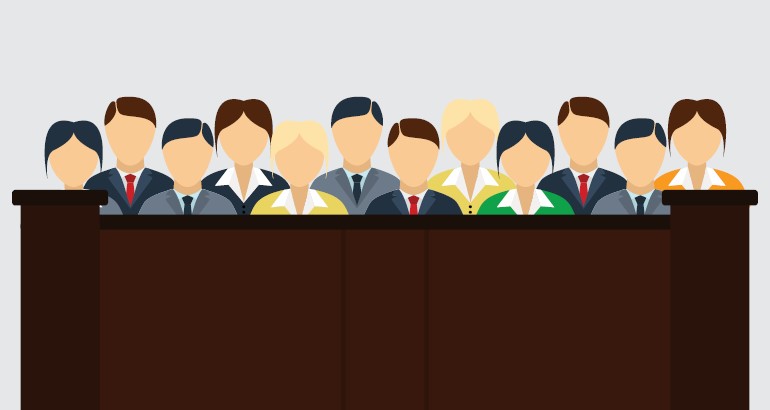Juries are vital part of the Australian legal system. Juries are comprised of men and women from the community- randomly selected from the electoral roll.
The responsibility of the jury is to consider the facts of a case as presented by the Crown (Prosecution) and the Defence and decide whether any offence has been proved beyond reasonable doubt.
The jury is assisted by the Judge who explains elements of the law. The Judge is also entitled to assist the jury to understand the facts revealed by the evidence put forward by the Crown and the Defence.
Most importantly, it is the members of the jury alone who bear the responsibility in determining the facts of the matter and deciding whether the accused is guilty or not guilty.
If you have been selected for jury service, you will receive a summons. A summons is a legal notice which requires a person to attend, give evidence or produce documents. In this case- the summons requires you to attend court. Being issued with a jury summons, does not mean you will serve on the jury. Who actually servers on the jury is decided during a further selection process called empanelling.
Empanelling is the process where your name, along with your suburb and occupation are placed in a rotating box. The Judge’s Associate then randomly selects jurors from this box.
Once a juror’s name is called, the Crown may call ‘stand by’ or the Defence may call ‘challenge’. In the event this happens, another name will be called. If your name is selected, and you are not ‘stood by’ or ‘challenged’ you will be sworn in as a juror. This process is repeated until there are twelve jurors in the jury box.
Once empanelled, the charge, names of the prospective witnesses and the importance of acting impartially is pressed upon the jury by the Judge. The Judge will ask any juror who believes that they cannot act impartially in the trial to identify themselves.
Once this process has been completed, the trial will begin.
The Crown will ‘open’ the case with a brief outline of evidence to be called. The Crown will then call each witness, one by one. Each witness will be first questioned by the Crown, and then cross-examined by the Defence. The Crown does have the ability to re-examine a witness in some circumstances.
At the close of the Crown case, the Defence may call their own witnesses and the process is repeated.
At the conclusion of both the Crown and Defence case, both parties may address the jury in the form of a closing submission. At the conclusion of the addresses to the jury, the Judge will then ‘sum up’ the case. The jury will then retire to deliberate. Deliberation may take minutes, hours, even days.
If a jury returns a verdict of not guilty- the accused is discharged and allowed to go free. If the jury returns a guilty verdict- the Judge will then commence the sentencing proceedings. The jury plays no part in sentencing the accused.
———————-





